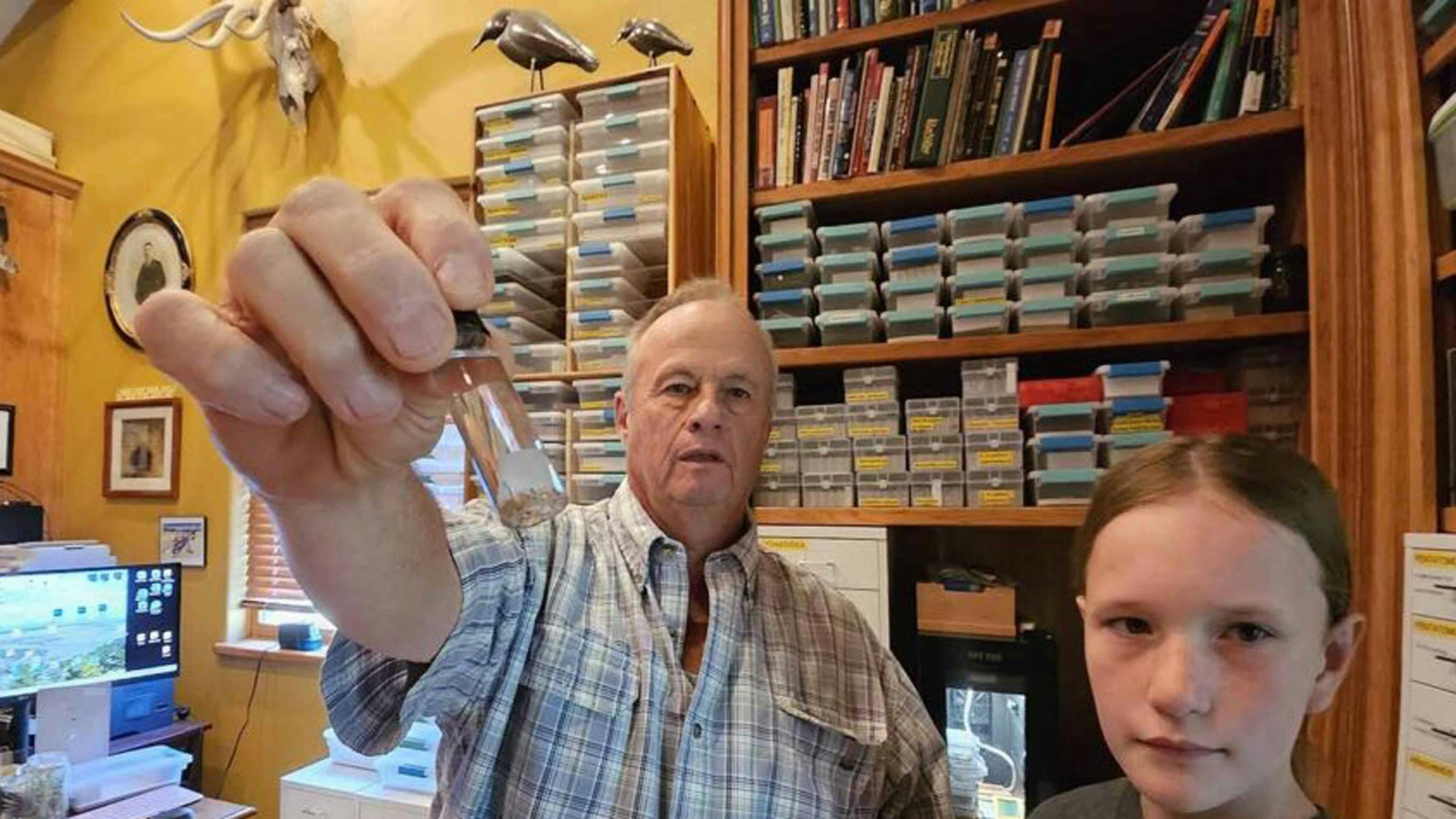When a G4 Severe geomagnetic storm reached Earth’s atmosphere on Sunday, most of Wyoming was covered in clouds. David Porter of Sundance was one of the few who had an unobstructed view of the Northern Lights.
“My dog woke me up at 1:30 a.m. to go pee,” he told Cowboy State Daily. “I just happened to turn around, look to the north, and saw these big white and red streaks, plainly visible to the naked eye.”
Porter rushed inside to grab his mirrorless camera and aimed it at the northern sky. After he stitched his photos together, he had an incredible panorama of a multicolored aurora streaking over Sundance.
“Thank goodness the dog had to pee,” he said.
Aurora Quirks
The last time Wyoming experienced an aurora this intense was in May 2024. However, astronomers already anticipated that this weekend’s aurora wouldn’t be as spectacular as that one.
The Space Weather Prediction Center detected a large coronal mass ejection (CME) on May 30. It intensified from a G3 to a G4 on its way to Earth, but already showed signs of not being as incredible as its 2024 predecessor.
“Auroras are a touchy, sensitive thing for us to get right,” said Max Gilbraith, planetarium coordinator at the University of Wyoming. “How the aurora manifests depends on several factors like density, intensity, and variability of the solar wind. We could get a powerful CME, but it doesn't quite manifest perfectly when it reaches Earth.”
Gilbraith described CMEs as “their own beast” that evolve and change as they hurtle through space. They can change their trajectory mid-flight, which alters the viewing experience before they even reach Earth’s atmosphere to manifest as an aurora.
“It's not like a bowling ball going down the lane,” he said. “A CME has its own energy, electrical, and magnetic fields inside it so that it can change itself.”
Porter slept in on Sunday morning because he had been following the forecasts from the Space Weather Prediction Center and many other apps and agencies. The chances of an amazing aurora were good, but not that good.
“I knew there was a possibility, and the forecast was pretty high that night,” he said. “People get all excited and will drive hundreds of miles for a potentially big aurora, but they’re very unpredictable. It’s never a sure thing.”
Plus, Wyoming was covered in storm clouds that night. That made prospects less optimistic across the Cowboy State.
When In Rome (or Crook County)
As soon as Porter saw the aurora with the naked eye, he set up his camera for his Sundance shot. That’s always a good sign that there’s something worth shooting.
“Usually, you have to get your eyes dark adjusted,” he said. “Stand outside for a while, and then you can see if there’s a green glow on the horizon. A camera definitely helps bring it out, because you can do longer exposures. But this one was plainly visible to the naked eye."
Porter used a fast, wide-angle lens, taking four-second exposures to get his Sundance shot. He stitched seven shots together to put together his panorama.
That was nothing compared to the aurora on May 10-11, 2024. Porter was armed and ready that night, capturing some of the best aurora photos of his career with Devils Tower in the foreground.
“That one was a lot more powerful,” he said. “Usually, you can only see the aurora on the Northern horizon. This one was overhead and extending to the south. You could see these vertices overhead, like spinning, pulsating rings of light. It was crazy.”
Porter said the aurora was so intense that it felt more like twilight than midnight. He got some “incredibly epic photos that night.”
The June 1 aurora wasn’t quite as spectacular, but Porter was glad he caught a glimpse of it. His wife, Meghan, stepped outside to take it in with him.
“My wife came outside and immediately said, ‘Holy cow, I can see it right now,’” he said. “Usually, it’s just a glow on the horizon, but this aurora was plainly visible. It was one of the more powerful auroras we've had since last May.”
Good Times Ahead
The sun reached the climax of its solar maximum in October 2024. It’s the point of the 11-year solar cycle when there are more sunspots on the surface of the sun, which means there’s a higher probability of CMEs being generated.
The four years around the solar maximum are typically the best time to see auroras throughout the Northern Hemisphere. Wyoming’s still in the best window of opportunity for dazzling auroras.
“We could be out of a solar maximum and still get auroral storms,” Gilbraith said. It's just that the likelihoods increase and decrease over time. We just have to keep an eye on it.”
The Space Weather Prediction Center detected the CME two days before it reached Earth’s atmosphere. Gilbraith said that’s as much advanced notice as Wyomingites can expect to get.
“One of the tricky things about the solar wind is we would prefer to have a side-angle view of it as it's coming towards the Earth,” Gilbraith said. “Maybe we'll get a new satellite that gives us a permanent side view of the solar wind, and we'll have even better forecasts. Otherwise, it’s like trying to take a picture of a laser pointer pointed right at the camera.”
With the advances in modern technology, auroras are more accessible than ever. Porter might have all the equipment of a professional photographer, but that doesn’t mean the average Wyomingite can’t get a great shot of the Northern Lights.
“Anybody with a relatively modern smartphone with a night mode can capture amazing photos of the aurora,” he said. “You don’t have to have a fancy camera, fast lens, or tripod. You already have what you need in your hands.”
Andrew Rossi can be reached at arossi@cowboystatedaily.com.





